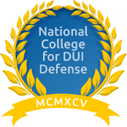- DUI
- Criminal Defense
- Florida DUI
- Traffic Offenses
- Drug Charges
- Marijuana Charges
- Violent Crimes
- Domestic Violence
- Temporary Injunctions
- Weapons Charges
- Theft Crimes
- White Collar Crime
- Juvenile Offenses
- Sex Crimes
- Violation of Probation
- Early Termination of Probation
- Seal or Expunge Criminal Record
- Criminal Appeals
- US Federal Offenses
- Misdemeanor Charges
- Felony Charges
- Co-Defendant Cases
- College Student Defense
- College Student Hearings
- FSU Students
- FAMU Students
- Florida Panhandle Arrests
- Extradition to Florida
- Bench Warrants / Warrants
- Emergency Bond Hearings
- Gambling Charges
- Drone Arrests
- Marsy’s Law
- UAS Infractions
- Introduction of Contraband
- Lying to Police
- Locations
- Case Results
- Our Firm
- Media
- Resources
- Blog
- Contact Us
New DNA Evidence Closes 25-Year-Old Tampa Cold Case
May 29, 2023 Don Pumphrey, Jr. Criminal Defense, Violent Crimes Social Share
DNA evidence is considered a reliable source of evidence in forensic investigations. When DNA is properly collected, preserved, and analyzed by trained professionals, it can be an invaluable tool. DNA evidence helps with excluding or identifying potential suspects in a criminal case.
Although DNA evidence is considered reliable, human error or contamination during collection, handling, or analysis can cause inaccuracies.
A recent cold case from Tampa has just closed due to new DNA technology. But the convicted defendant maintains that he did not commit the crime. This raises the question: how accurate is DNA evidence? This page will provide the case details, along with information on DNA evidence reliability and the dangers of wrongful convictions.
Case Details
On August 27th, 1994, a 21-year-old woman was visiting Tampa, Florida for a music festival when she was brutally beaten and raped by two men. The case went cold for nearly 30 years until new DNA evidence directed police to Rodney Allen Dawson.
According to a news report, the unnamed victim was forced at gunpoint to get into the vehicle of a stranger after she was left stranded by a nightclub. The victim later described in a courtroom that one of the two men who raped her had a single gold tooth.
In 2020, Tampa police reopened the case and tested evidence collected from a rape kit for the presence of DNA. The DNA collected matched a sample belonging to Dawson, whose DNA was collected and stored after previously being convicted of burglary and theft charges. In November 2022, a jury found Dawson guilty of the offense, despite him maintaining his innocence.
“I feel like in the process of time the truth will come out,” he told the judge. “I’m not a monster. I didn’t do this to this lady.”
When Dawson and the victim reappeared in the courtroom in May 2023, the judge sentenced Dawson to a little over 10 years in prison. After Dawson’s release, he will be required to register as a sex offender.
DNA Evidence Reliability
DNA evidence accuracy is believed to be around 95% and has been widely used as forensic evidence in criminal cases. But DNA analysis still has room for error, which can be caused by a human handling the evidence improperly, procedural error, or other factors.
According to a study by the National Library of Medicine titled, “The Evaluation of Forensic DNA Evidence,” the best way to ensure accuracy with DNA sampling and analysis is through paying attention to detail with the careful design and statistical analysis. High laboratory standards rely on both quality control and quality assurance.
Quality control is the set of measures taken to ensure that DNA typing, and interpretation meet a specific standard. DNA typing is the laboratory procedure for studying genetic variations across the population.
Quality assurance is considered the steps that a laboratory takes to monitor, verify, and document its performance.
Under the DNA Identification Act of 1994, the government established a federal framework for the standards to ensure quality testing and analysis of DNA. The standards have been developed by the DNA Advisory Board and appointed by the FBI.
The DNA Identification Act established the national index of the following:
- DNA identification records of persons convicted of crimes;
- Analyses of DNA samples recovered from crime scenes; and
- Analyses of DNA samples recovered from unidentified human remains.
In addition, the act set out to create specific standards for testing DNA through the national index system. It also established penalties for criminal offenses of those who fail to abide by the privacy protection standards.
In 2004, the Justice for All Act was passed to make the following additions to the DNA Identification Act:
- Creation of new indicted persons’ index;
- Expansion of the criminal offenses in which federal and military offender samples are collected;
- Enhancement of the criminal penalties for unauthorized use of the National DNA Index System – CODIS (NDIS);
- Authorization of one-time keyboard searches by all NDIS participants of samples not included in NDIS;
- Deletion of separate requirement for semiannual external proficiency tests;
- Requirement for the state and federal forensic laboratories to be accredited by a nationally recognized program within two years of enactment;
- Requirement for the FBI to report to Congress any plans to change the “core genetic markers” 180 days (about 6 months) prior to the change taking place.
Innocence Project and DNA Exonerations
The Innocence Project—a non-profit organization founded in 1992 that works towards getting wrongfully convicted persons out of prison and re-established back in society—has recorded DNA exonerations nationwide from 1989-2020. In total, the Innocence Project has achieved 375 exonerations due to DNA evidence.
The following lists data from the Innocence Project on DNA exonerations between 1989-2020:
- The very first DNA exoneration took place in 1989;
- 37 out of 50 states have won exoneration cases;
- The average number of years served by those exonerated is 14 years of imprisonment;
- The total number of years served by all those exonerated under The Innocence Project is 5,284;
- The average age at the time of wrongful conviction was 26.6, whereas the average age at the time of exoneration was 43;
- Out of the 375 persons wrongfully convicted, 21 individuals served time on death row;
- Out of the 375 persons wrongfully convicted, 44 individuals pleaded guilty to crimes they did not commit.
In Florida, there have been 65 exonerations since 1997. Of those, 17 inmates were exonerated using DNA testing. However, there have also been eight exonerees who were sentenced to death prior to being freed.
Dangers of Wrongful Convictions
Wrongful convictions are detrimental to everyone in society. Not only does it place innocent individuals in incarceration, but it also causes a loss of trust from society with the social justice system. Some of the specific dangers associated with wrongful conviction include:
- Loss of freedom – Certain criminal offenses in Florida carry extensive prison sentences, meaning the wrongfully convicted person may lose out on years of their life.
- Impact on the individual and their family – Getting convicted of a crime has severe emotional, psychological, and financial consequences to the convicted person and their families. Even if they are exonerated, the individual may still feel the weight of the social stigma of being convicted of a crime.
- Concerns over public safety – With the wrong person behind bars, the real offender may remain free, which can be a public safety concern if they attempt or successfully commit other criminal offenses.
- Loss of public trust – Concerns regarding reliability and fairness of the investigative and legal process are lost when innocent individuals are wrongfully convicted.
- Inefficiency and waste of public resources – Valuable resources are wasted on wrongful convictions that could be better allocated to genuine public safety concerns.
It is crucial to address these dangers, and to look for ways to improve investigative techniques to ensure fair and impartial trials.
Find a Defense Attorney in Tallahassee, Florida
If you or someone you know has been wrongfully accused of a crime, prioritize speaking with a defense attorney in your area. A skilled attorney can help cross-examine evidence and use other investigative methods to help prove your innocence. Getting convicted of a crime can result in harsh penalties which can impact the rest of your life. The stakes are too high to not take seriously.
Don Pumphrey and his team have collaborated with clients across the state for various offenses. We understand the nuances of the legal landscape, providing you with knowledge and support every step of the way. Contact Pumphrey Law Firm today at (850) 681-7777 or leave an online message on our website.
Written by Karissa Key










